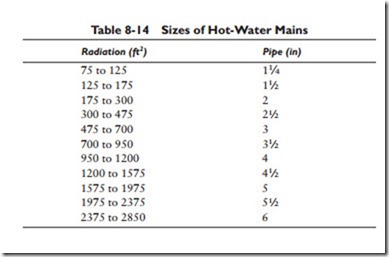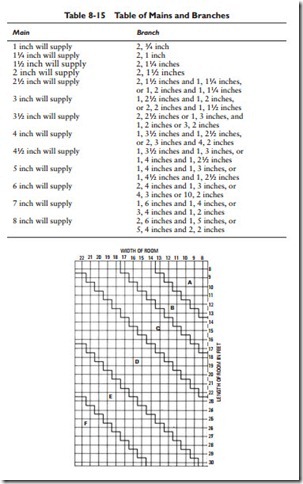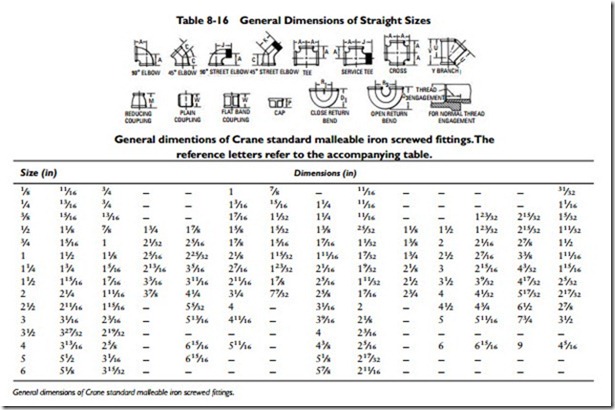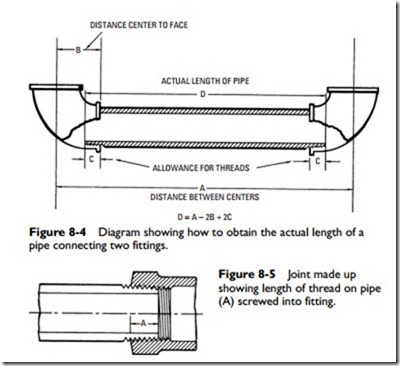Sizing Hot-Water (Hydronic) Pipes/Tubing
Simplified pipe-sizing tables for hot-water heating systems are also available from organizations such as the ASHRAE.
Pipe sizing hot-water lines is similar in some respects to the calculations used in duct sizing because the pipe sizes are selected on the basis of the quantity and rate of water flow (expressed in gallons per minute, or gpm) and the constant friction loss. This friction loss (or drop) is expressed in thousandths-of-an-inch per foot of pipe length.
The velocity of water in the smaller residential pipes should not exceed 4 fps (feet per second), or there will be a noise problem.
In forced hot-water heating systems, the problem of friction drop in the pipes can be overcome by the pump or circulator. In this respect, a forced hot-water heating system is much easier to size than a steam heating system.
The rule-of-thumb method used to size steam mains (see previous section) can also be used to determine the approximate sizes of hot- water mains; however, certain important differences should be noted.
When sizing hot-water mains, the mains may be reduced in size in proportion to the branches taken off. They should, however, have as large an area as the sum of all branches beyond this point. It is advisable that the horizontal branches be one size larger than the ris- ers. Returns should be the same size as the supply mains. Table 8-14 lists sizes of hot-water mains and the equivalent radiation ranges in square feet. Sizes for mains and branches are given in Table 8-15.



